
The Hispanic and Portuguese World
THE MODERN STATES OF THE AMERICAS
The development of the Library's Hispanic and Portuguese collections parallel the emergence of new republics in the Americas, as independence movements swept the Hemisphere throughout the nineteenth century. Materials for the study of the governments--presidencies, congresses, assemblies, courts of justice--of the region, such as records of congressional debates from their origin in the nineteenth century and official publications from republics and extensive research materials on related subjects, make the Library's holdings unequalled for completeness. The relationships of individuals and countries are reflected in the Library's manuscript, book, map, print, law, official publication, recording, and music collections.
 Le Chimborazo vu depuis le Plateau de Tapia. In
Alexander
von Humboldt and Aimé Bonpland. Voyage de Humboldt et
Bonpland...Ière partie; relation historique...Paris, F. Schoell,
1810. Snow-capped peaks, high arid plateaus, and deep luxuriant
valleys all characterize one of the natural land formations most
often associated with South America: the mountain system known as
the Cordillera de los Andes. From 1799 to 1804, the renowned
explorer and naturalist Alexander von Humboldt, accompanied by
the botanist Aimé Bonpland, made a scientific excursion to
South and Central America collecting numerous plant specimens and
studying flora, fauna, and geology. Chimborazo, a formidable
extinct volcano of some 22,000 feet, is situated in central
Ecuador. In pre-Conquest times, it was located in the northern
part of the Inca empire. For a long period, it was considered
the highest Andean mountain. (Rare Book and Special Collections
Division)
Le Chimborazo vu depuis le Plateau de Tapia. In
Alexander
von Humboldt and Aimé Bonpland. Voyage de Humboldt et
Bonpland...Ière partie; relation historique...Paris, F. Schoell,
1810. Snow-capped peaks, high arid plateaus, and deep luxuriant
valleys all characterize one of the natural land formations most
often associated with South America: the mountain system known as
the Cordillera de los Andes. From 1799 to 1804, the renowned
explorer and naturalist Alexander von Humboldt, accompanied by
the botanist Aimé Bonpland, made a scientific excursion to
South and Central America collecting numerous plant specimens and
studying flora, fauna, and geology. Chimborazo, a formidable
extinct volcano of some 22,000 feet, is situated in central
Ecuador. In pre-Conquest times, it was located in the northern
part of the Inca empire. For a long period, it was considered
the highest Andean mountain. (Rare Book and Special Collections
Division)
The LUÍS DOBLES SEGREDA COLLECTION, on microfilm, is a comprehensive record of publication from and about Costa Rica. The distinguished Costa Rican scholar and diplomat Dobles Segreda began his collection in 1910 in an effort to bring together as many writings as possible on his country, wherever published. The collection, purchased by the Library of Congress in 1943, contained more than 5,600 books and pamphlets issued between 1831 and the 1930s. The papers of Ephraim George Squier, in the Manuscript and Geography and Map Divisions, are essential for the study of Central America in the mid-nineteenth century. Squier (1821-1888), author of Ancient Monuments of the Mississippi Valley (1848), Nicaragua (1852), Notes on Central America (1855), Honduras (1870), and Peru (1877) and a U.S. diplomat and entrepreneur, had maintained an impressive collection of papers on his anthropological research and diplomatic and business activities in Central America and Peru, including correspondence, business records, manuscripts for publications, and related materials from 1841 to 1888. A group of thirty-eight maps of Central America and Peru drawn or annotated by Squier provides detailed information on Honduras, El Salvador, and Nicaragua. These materials, compiled primarily for Squier's nineteenth- century canal and railway initiatives in Central America, provide a glimpse into the intense U.S.-British rivalry in Central America when Squier was diplomatic representative.
The Manuscript Division also has the papers of Central American filibusters William Walker and David Deaderick and the Guatemalan documents collection which contains some 35,000 items pertaining to government agencies, political parties, and labor unions (1944-1954) during the Arévalo and Arbenz presidencies. The papers of Chandler P. Anderson, in the Manuscript Division, relate to the international diplomatic and arbitration efforts of a lawyer in Central America, Cuba, and Panama, including records on the Hay-Paunceforte Treaty, the Chamizal (Mexico) case, the Nicaragua-Honduras boundary dispute (1920-1921), Nicaraguan politics, and Panama-Costa Rica boundary disputes (1914-1932).
 Négresses allant a l'Eglise pour être
baptisées. Engraving. By Jean-Baptiste Debret. Voyage
pittoresque et historique au Brésil, Vol. 3. Paris 1834-
39. (Rare Book and Special Collections Division)
Négresses allant a l'Eglise pour être
baptisées. Engraving. By Jean-Baptiste Debret. Voyage
pittoresque et historique au Brésil, Vol. 3. Paris 1834-
39. (Rare Book and Special Collections Division)
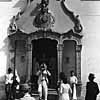 Bom Jesus de Matosinhos, Congonhas do Campo, Minas
Gerais,
Brazil. Black and white photograph. [1940]. Africans, who were
brought to Brazil as slaves to work on plantations in increasing
numbers from the late 1500s, comprised an important part of the
population and contributed significantly to the wealth and
uniqueness of Brazilian culture. In his encyclopedic multivolume
work, Debret stresses the pivotal role played by blacks as the
backbone upon which Brazilian society and economy rested. The
plate above depicts black women on their way to church to be
baptized. The portly priest is also black; there were in Rio de
Janeiro, by the early 1800s, at least three churches served by
free black priests. This work and that in the photograph from
the Archive of Hispanic Culture express a fusion of cultures and
beliefs that came to typify Brazil in the years after the
Portuguese conquest. The church of Bom Jesus de Matosinhos and
its sanctuary, established as a parish in 1746, is famous for the
artistic work of the celebrated Brazilian architect and sculptor
António Francisco Lisboa, or O Aleijadinho. His sculpture
included pulpits, portals, balconies, altars, statues,
processional images, and caryatids. His soapstone group of
twelve prophets (1800-1805) for the Church of Bom Jesus de
Matosinhos is considered one of his most dramatic works. (Archive
of Hispanic Culture, Prints and Photographs Division)
Bom Jesus de Matosinhos, Congonhas do Campo, Minas
Gerais,
Brazil. Black and white photograph. [1940]. Africans, who were
brought to Brazil as slaves to work on plantations in increasing
numbers from the late 1500s, comprised an important part of the
population and contributed significantly to the wealth and
uniqueness of Brazilian culture. In his encyclopedic multivolume
work, Debret stresses the pivotal role played by blacks as the
backbone upon which Brazilian society and economy rested. The
plate above depicts black women on their way to church to be
baptized. The portly priest is also black; there were in Rio de
Janeiro, by the early 1800s, at least three churches served by
free black priests. This work and that in the photograph from
the Archive of Hispanic Culture express a fusion of cultures and
beliefs that came to typify Brazil in the years after the
Portuguese conquest. The church of Bom Jesus de Matosinhos and
its sanctuary, established as a parish in 1746, is famous for the
artistic work of the celebrated Brazilian architect and sculptor
António Francisco Lisboa, or O Aleijadinho. His sculpture
included pulpits, portals, balconies, altars, statues,
processional images, and caryatids. His soapstone group of
twelve prophets (1800-1805) for the Church of Bom Jesus de
Matosinhos is considered one of his most dramatic works. (Archive
of Hispanic Culture, Prints and Photographs Division)
International interest in the construction of an interoceanic canal across the Central American isthmus is extremely well documented in the Library of Congress. The JOSEPH AND ELIZABETH ROBINS PENNELL COLLECTION, in the Prints and Photographs Division, contains copies of Joseph Pennell's graphic prints on the construction of the Panama Canal. In 1978 the Library acquired the PANAMA CANAL ZONE LIBRARY-MUSEUM COLLECTION which documented the U.S. role in the Panama Canal Zone in the twentieth century. This multiformatted collection has been disbursed throughout the Library, with rich holdings in the Geography and Map and Serial and Government Publications Divisions, as well as the general books collection. The papers of George W. Goethals and William Gorgas on Panama Canal construction are in the Manuscript Division, as are those of Philippe Jean Buneau-Varilla which address French and United States efforts to build a canal in Panama by one of its participants, the Nicaraguan Canal Construction Company (1886-1891) and of Lewis Haupt (Nicaraguan Canal Project 1861-1923) and of the numerous surveys by U.S. representatives, including those of naval officer Charles Whiteside Rae of the Isthmus of Tehuantepec (1870-1871), naval officer Thomas Oliver Selfridge, Jr.'s correspondence and maps relating to his survey of the Isthmus of Darien for a proposed interoceanic canal (1869-1874), and naval officer Robert Wilson Shufeldt's correspondence and maps pertaining to his 1870 to 1871 survey expedition in Tehuantepec in search of a trans-Isthmus canal route.
The Library's materials on modern Mexico are particularly extensive. The Manuscript Division has a collection of manuscripts, military diaries, correspondence, family documents of Mexican Emperor Agustín de Iturbide (1799-1876), and correspondence of Mexican President Antonio López de Santa Anna. The Microform Reading Room has, on seventy-two reels of microfilm from the Banco de México, the papers of Matías Romero, Mexico's diplomat in the United States from 1864 to 1867. The ARCHIV KAISER MAXIMILIANS VON MEXIKO COLLECTION, in the Manuscript Division, contains photocopies of Austrian archival documents pertaining to the French occupation of Mexico, 1861-1865, and the Microform Reading Room has the ARCHIVO MAXIMILIANO DE HAPSBURGO (a seventy-four-reel microfilm collection from Mexico's Instituto Nacional de Antropología e Historia (INAH) which contains copies of manuscripts and printed materials from the nineteenth century on the reign of Maximilian in Mexico including letters, telegrams, circulars, decrees, broadsides, poems, newspaper and magazine articles, and speeches, covering political and military affairs, international relations and diplomacy, and legal, commercial, and financial matters.
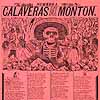 Calaveras de montón. Número 1.
José
Guadalupe Posada. Broadside, full sheet, zinc etching. (Mexico:
Antonio Vanegas Arroyo, 1910). One of the most popular forms of
engravings produced by Posada is the multitude of uninhibited
illustrations which he engraved year after year during the last
days of October and first days of November when all in Mexico
celebrate All Saints' Day, All Souls' Day, or most commonly in
Mexico, the Day of the Dead. Death has a unique persona in
Mexico; in the pre-Hispanic cultures as in the later Christian
culture, death was just a further step in life itself, a step
which offered a security and serenity markedly contrasting the
sufferings and worries which afflict mankind. Life and death
complemented each other. To a large extent, the boom in
representations of the human skeleton in the twentieth century is
due to José Guadalupe Posada. He took the popular
traditions and gave them a material form of such expressive vigor
that the macabre surrendered to the dynamic and jovial vitality
of his images. This dangerous and violent-looking calavera is
apparently about the business of creating more calaveras, as the
title suggests: piles, heaps, masses of calaveras. One of
Posada's most striking images of skeletons in motion, this print
has been used for several different subjects. (Swann Collection,
Prints and Photographs Division)
Calaveras de montón. Número 1.
José
Guadalupe Posada. Broadside, full sheet, zinc etching. (Mexico:
Antonio Vanegas Arroyo, 1910). One of the most popular forms of
engravings produced by Posada is the multitude of uninhibited
illustrations which he engraved year after year during the last
days of October and first days of November when all in Mexico
celebrate All Saints' Day, All Souls' Day, or most commonly in
Mexico, the Day of the Dead. Death has a unique persona in
Mexico; in the pre-Hispanic cultures as in the later Christian
culture, death was just a further step in life itself, a step
which offered a security and serenity markedly contrasting the
sufferings and worries which afflict mankind. Life and death
complemented each other. To a large extent, the boom in
representations of the human skeleton in the twentieth century is
due to José Guadalupe Posada. He took the popular
traditions and gave them a material form of such expressive vigor
that the macabre surrendered to the dynamic and jovial vitality
of his images. This dangerous and violent-looking calavera is
apparently about the business of creating more calaveras, as the
title suggests: piles, heaps, masses of calaveras. One of
Posada's most striking images of skeletons in motion, this print
has been used for several different subjects. (Swann Collection,
Prints and Photographs Division)
The impact of the early twentieth-century revolution in Mexico is documented by substantial materials in the Library of Congress. The Manuscript Division has army officer John L. Hines's annotated photoprocessed intelligence maps showing the operations of General John J. Pershing's 1916 Punitive Expedition in Mexico as well as Pershing's papers. The Microform Reading Room has the papers of Adalberto Tejeda (governor of the state of Vera Cruz, 1920-1924); the ARCHIVO DE DON FRANCISCO I. MADERO (on twenty-two reels of microfilm from the collections of Mexico's INAH), containing handwritten, typed, and printed materials from the late nineteenth and early twentieth centuries dealing with that Mexican president's public life and in which are found letters, telegrams, circulars, bills, newspaper and magazine clippings, business orders and accounts, the handwritten original of Madero's classic work, La sucesión presidencial, and coverage of Madero's presidential campaign in Mexico in 1910 and other political matters; and the ARCHIVO DE LA REVOLUCIóN MEXICANA (on eighty-five reels of microfilm from Mexico's INAH), which is a collection of bound typewritten transcripts of diverse printed and manuscript originals from the seventeenth through the twentieth centuries dealing with the issues, institutions, and personalities of the Mexican Revolution.
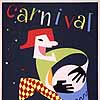 Carnival Havana 1952. Half tone and lithographed
poster.
1952. Carnival originated in Europe in the Middle Ages to
portend the start of Christian Lent and symbolically celebrate
the death of winter and the beginning of spring. In the Luso-
Hispanic world, it is observed annually throughout the Americas
and the Iberian Peninsula, with noteworthy celebrations in Rio de
Janeiro, Salvador (Bahia), Port of Spain, and New Orleans.
(Poster Collection, Prints and Photographs Division)
Carnival Havana 1952. Half tone and lithographed
poster.
1952. Carnival originated in Europe in the Middle Ages to
portend the start of Christian Lent and symbolically celebrate
the death of winter and the beginning of spring. In the Luso-
Hispanic world, it is observed annually throughout the Americas
and the Iberian Peninsula, with noteworthy celebrations in Rio de
Janeiro, Salvador (Bahia), Port of Spain, and New Orleans.
(Poster Collection, Prints and Photographs Division)
The Library's collection of materials on nineteenth- and twentieth-century Cuba is quite rich. Among these materials are found, in the Manuscript Division, the Juan and Nicolás Arnao papers (1868-1898), of these two Cuban revolutionaries among whose papers are found revolutionary publications and letters from José Martí, Máximo Gómez, and Antonio Maceo; the Domingo del Monte collection of manuscripts pertaining to Cuban history (1500-1869) with substantial holdings on colonial administration, military affairs, and nineteenth-century abolitionist and revolutionary activities; and the papers of José Ignacio Rodríguez (1860-1907), a Cuban in the United States, who served in the Bureau of American Republics and as the first librarian of the Columbus Memorial Library, and later of the Organization of American States. His collection also includes the papers of the Cuban reformer José Manuel Mestre and of Cuban American political societies. The Recorded Sound Reference Center of the Motion Picture, Broadcasting, and Recorded Sound Division has an extensive collection of commercial and noncommercial recordings, including 230 radio monitorings of Fidel Castro's speeches.
![Thumbnail image of A view of the town
and fortification of [San Juan] Puerto
Rico [1824]](hst71001.jpg) A view of the town and fortification of [San Juan] Puerto
Rico [1824]. Original watercolor. San Juan is Puerto Rico's
most populous municipio, its cabecera, which is the capital, was
founded in 1521. It is the second oldest capital city in the
hemisphere. During the sixteenth century, San Juan was a
departure point for Spanish exploration and colonization, and its
location was a strategic military site in the Caribbean. In 1647
Felipe IV called it the key and vanguard of all the West Indies.
Among the major fortifications are El Morro Fort begun in 1539,
the city wall, begun in the 1630s, and Fort San Cristóbal,
built in 1765. By the midnineteenth century San Juan was totally
fortified. (Prints and Photographs Division)
A view of the town and fortification of [San Juan] Puerto
Rico [1824]. Original watercolor. San Juan is Puerto Rico's
most populous municipio, its cabecera, which is the capital, was
founded in 1521. It is the second oldest capital city in the
hemisphere. During the sixteenth century, San Juan was a
departure point for Spanish exploration and colonization, and its
location was a strategic military site in the Caribbean. In 1647
Felipe IV called it the key and vanguard of all the West Indies.
Among the major fortifications are El Morro Fort begun in 1539,
the city wall, begun in the 1630s, and Fort San Cristóbal,
built in 1765. By the midnineteenth century San Juan was totally
fortified. (Prints and Photographs Division)
The first independent Latin American nation, Haiti, is represented by extensive holdings, among which is found a collection of original addresses and proclamations for the period 1798-1800 of Haitian liberator Toussaint L'Ouverture, in the Manuscript Division, and a selection on microfilm of portions of the Mangones collection of books and manuscripts on independence and the early national period, in the Microform Reading Room.
The papers of various U.S. citizens involved in inter- American affairs, in the Manuscript Division, include those of Presidents Thomas Jefferson, James Madison, James Monroe, James K. Polk, U. S. Grant, William McKinley, Theodore Roosevelt, William Howard Taft, Woodrow Wilson, and Warren G. Harding; of U.S. Secretaries of State, such as Henry Clay, William Marcy, James G. Blaine, Richard Olney, John Hay, Philander C. Knox, Charles Evans Hughes, Cordell Hull, and Henry Kissinger; and of special diplomats Joel Poinsett, Jeremy Robinson, Nicholas B. Trist, John Barrett, and Josephus Daniels.
Involvement in the affairs of various Latin American nations are reflected in the papers in the Manuscript Division of P. G. T. Beauregard, Winfield Scott, David Connor (U.S.-Mexican War 1846-1848), George Dewey and Pascual Cervera (Spanish American War), Leonard Wood (U.S. Army of occupation in Cuba), and in the papers of private citizens and organizations including those of Mary Mann (correspondent on educational initiatives with Sarmiento, Mitre, and other nineteenth-century Argentine leaders), Clara Barton (Spanish American War), and the Women's Auxiliary Conferences of Pan American Congresses (minutes and correspondence, 1915-1927). The Geography and Map Division possesses an original manuscript map of the U.S. siege of Vera Cruz during the U.S.-Mexican War, prepared by P. G. T. Beauregard, and photocopies of Robert E. Lee's map collection from that same war.
Discussions of inter-American commercial interests are found in the papers of Riggs and Company (Central and South America, 1816-1854) and the National Citizens Committee on Relations with Latin America (financial and banking matters, 1905-1921), in the Manuscript Division, and the 214-reel microfilm collection, the GIBBS ARCHIVE: THE PAPERS OF ANTONY GIBBS & SONS, 1744-1953, in the Microform Reading Room, which consists of the family papers, and the business archives of Antony Gibbs and Sons, 1808-1969, a British business firm with particularly strong interests in Spain, Peru, Chile, Bolivia, and Brazil.
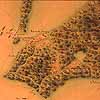 [Portion]. Croquis de la Ysla de Balanguingui y sus
adyacentes en el Archipielago de Jolo [Philippines]...1848.... J.
Espejo. 1848.
[Portion]. Croquis de la Ysla de Balanguingui y sus
adyacentes en el Archipielago de Jolo [Philippines]...1848.... J.
Espejo. 1848.
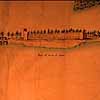 [Panoramic view of Fort Sipac]. Spain
maintained administrative and military control of the Philippines
from Magellan (1521) until the Spanish American War (1898). This
map was prepared following the expedition directed by the
governor Narciso Clavería against rebellious moros of
Balanguingui who had taken more than 200 captives during the
revolt. This map from the collection of the Real Escuela de
Navegación de Cádiz is part of a unique collection
of nearly 400 manuscript maps and charts of various parts of the
Hispanic world acquired by the Library of Congress from Maggs
Brothers, London in the 1920s. (Maggs Map Collection, Geography
and Map Division)
[Panoramic view of Fort Sipac]. Spain
maintained administrative and military control of the Philippines
from Magellan (1521) until the Spanish American War (1898). This
map was prepared following the expedition directed by the
governor Narciso Clavería against rebellious moros of
Balanguingui who had taken more than 200 captives during the
revolt. This map from the collection of the Real Escuela de
Navegación de Cádiz is part of a unique collection
of nearly 400 manuscript maps and charts of various parts of the
Hispanic world acquired by the Library of Congress from Maggs
Brothers, London in the 1920s. (Maggs Map Collection, Geography
and Map Division)
The Manuscript Division's collection of the papers of U.S. Latin American specialists include those of James A. Robertson, Samuel Guy Inman, and Howard F. Cline, a former chief of the Library's Hispanic Division.
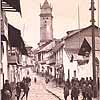 Street scene. Bogotá, Colombia. [1940].
Bogotá
was founded as Santa Fé de Bogotá in 1530 by
Gonzalo Jiménez de Quesada. Charles V gave the city a
coat of arms and made it the seat of the audiencia of New Granada
in 1548. It became the capital of the Viceroyalty of New Granada
in 1717 and the capital of independent Gran Colombia in 1821.
Today, it is the capital of Colombia. In 1948, it served as
host to the Ninth International Conference of American States at
which the draft charter of the Organization of American States
and the Pact of Bogotá, calling for peaceful settlement of
disputes among American nations, were approved. (Archive of
Hispanic Culture, Prints and Photographs Division)
Street scene. Bogotá, Colombia. [1940].
Bogotá
was founded as Santa Fé de Bogotá in 1530 by
Gonzalo Jiménez de Quesada. Charles V gave the city a
coat of arms and made it the seat of the audiencia of New Granada
in 1548. It became the capital of the Viceroyalty of New Granada
in 1717 and the capital of independent Gran Colombia in 1821.
Today, it is the capital of Colombia. In 1948, it served as
host to the Ninth International Conference of American States at
which the draft charter of the Organization of American States
and the Pact of Bogotá, calling for peaceful settlement of
disputes among American nations, were approved. (Archive of
Hispanic Culture, Prints and Photographs Division)
The first printed maps of independent Venezuela, Colombia, Peru, Mexico, Argentina, Brazil, and Chile are located in the Geography and Map Division. In that collection the researcher can find items ranging from general maps for every country and period to detailed plans from the 1920s of Cuban sugar warehouses among its fire insurance maps. There are literally tens of thousands of maps for Latin America in the collection, including those in the Nicaraguan Canal Construction Company papers (with field survey books and soundings, 1887-1913), to the most recent cartographic data for each country. More than 960 separate map series, on topics such as topography, hydrography, geology, city planning, and soil types for various countries of Latin America and the Caribbean are available. Large quantities of nautical and hydrographic charts produced by Argentine, Brazilian, and Chilean governmental agencies are supplemented by comprehensive holdings of U.S. Coast and Geodetic Survey, British Admiralty, French Hydrographic Office, Spanish and Portuguese Marine, and U.S. Hydrographic Office charts.
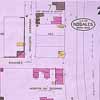 Fire Insurance Map of Nogales, Mexico 1931 (sheet 7).
Pelham, N.Y.: Sanborn Map
Company, 1931. A city in the state of Sonora, Mexico, Nogales was
formed as a railroad town in the late nineteenth century and
served as a gateway between the United States and Mexico. The
fire insurance map of a portion of the city provides detailed
information on businesses, building construction, and other
features. The Kuomintang Chinese Society headquarters is located
in the central portion of the map. Several other Mexican
communities and various industries in Cuba are represented in the
Sanborn map series. These maps are particularly useful to those
involved in urban and social history as well as urban design.
(Geography and Map Division)
Fire Insurance Map of Nogales, Mexico 1931 (sheet 7).
Pelham, N.Y.: Sanborn Map
Company, 1931. A city in the state of Sonora, Mexico, Nogales was
formed as a railroad town in the late nineteenth century and
served as a gateway between the United States and Mexico. The
fire insurance map of a portion of the city provides detailed
information on businesses, building construction, and other
features. The Kuomintang Chinese Society headquarters is located
in the central portion of the map. Several other Mexican
communities and various industries in Cuba are represented in the
Sanborn map series. These maps are particularly useful to those
involved in urban and social history as well as urban design.
(Geography and Map Division)
Additional items of interest in the study of nineteenth- and twentieth- century activities in Latin America and the Caribbean are located in the Manuscript Division. Among these items are notebooks compiled by John Bull during the U.S.-Mexican boundary commission survey of 1850; John Wills Greenslade's papers and aerial oblique photographic prints and manuscript maps of areas selected in 1940 for proposed naval air bases in Antigua, the Bahamas, Bermuda, British Guiana, Jamaica, Martinique, St. Lucia, and Trinidad; and Francis LeJau Parker's manuscript maps depicting the Tacna Arica boundary dispute between Chile and Peru.
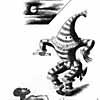 Black musicians, a female dancer and costumed figure under a
moon. Miguel Covarrubias. 1920. Covarrubias 257 A size. Miguel
Covarrubias (1904-1957) was a Mexican writer, artist,
ethnologist, and archaeologist. At the age of sixteen he taught
art in the national education project initiated by Minister of
Education José Vasconcelos. In the 1920s he went to New
York City where he gained commissions with Vanity Fair and the
New Yorker, contributed a book of caricatures, and produced a
work on peoples in Harlem, Negro Drawings (1927), of which the
above view is a part. In 1939 Covarrubias painted six widely
disseminated illustrated maps of the Pacific Basin for the Golden
Gate Exposition in San Francisco. He returned to Mexico in 1940
to rediscover his homeland in the work Mexico South and his
classic studies of Olmec art, The Eagle, the Jaguar, and the
Serpent (1954) and Indian Art of Mexico and Central America
(1957) which he both wrote and illustrated. Covarrubias's
outstanding original collection is found in the Library's Prints
and Photographs Division. Rare imprints of his materials are
also located in the Rare Book and Special Collections Division.
(Prints and Photographs Division)
Black musicians, a female dancer and costumed figure under a
moon. Miguel Covarrubias. 1920. Covarrubias 257 A size. Miguel
Covarrubias (1904-1957) was a Mexican writer, artist,
ethnologist, and archaeologist. At the age of sixteen he taught
art in the national education project initiated by Minister of
Education José Vasconcelos. In the 1920s he went to New
York City where he gained commissions with Vanity Fair and the
New Yorker, contributed a book of caricatures, and produced a
work on peoples in Harlem, Negro Drawings (1927), of which the
above view is a part. In 1939 Covarrubias painted six widely
disseminated illustrated maps of the Pacific Basin for the Golden
Gate Exposition in San Francisco. He returned to Mexico in 1940
to rediscover his homeland in the work Mexico South and his
classic studies of Olmec art, The Eagle, the Jaguar, and the
Serpent (1954) and Indian Art of Mexico and Central America
(1957) which he both wrote and illustrated. Covarrubias's
outstanding original collection is found in the Library's Prints
and Photographs Division. Rare imprints of his materials are
also located in the Rare Book and Special Collections Division.
(Prints and Photographs Division)
The FARM SECURITY ADMINISTRATION COLLECTION, in the Prints and Photographs Division, is probably the most famous pictorial record of American life in the 1930s. Roy E. Stryker, formerly an economics instructor at Columbia University, began this documentary project in 1935 for the Farm Security Administration (FSA). Some of the photographers in the small staff were Jack Delano, Walker Evans, Dorothea Lange, Russell Lee, Carl Mydans, Arthur Rothstein, Ben Shahn, John Vachon, and Marion Post Wolcott. This collection is invaluable for its graphic representations of the impact of the Depression on portions of the Luso-Hispanic American community in the 1930s.
The staff initially photographed the lives of sharecroppers in the South and migratory agricultural workers in the Midwest and West. As the scope of the project expanded, the photographers documented rural conditions throughout the nation, life in urban communities, and the domestic impact of the war effort. Approximately 164,000 original FSA negatives, 2,600 Kodachrome transparencies, 75,000 photoprints, and some photographers' notebooks were transferred to the Library of Congress in 1944.
In the Motion Picture and Television Reading Room are found documentaries of living conditions and news events on Latin America, from 1890s scenes of Mexico, Porfirio Díaz, and the Spanish American War to film footage of Argentine President Juan Perón. There also exists a unique collection of rare footage of Theodore Roosevelt in Latin America, including his activities in the Spanish American War and later trips to Panama, the Amazon, and Colombia.
The PEABODY MUSEUM COLLECTION, a collection of sound recordings from the 1890s to the 1910s, in the Archive of Folk Song, is the result of the first documented use of mechanical recording equipment for ethnological research, by Jesse Walter Fewkes, an anthropologist affiliated with the Peabody Museum of Archaeology and Ethnology of Harvard University. Fewkes successfully recorded the speech and song of the Passamaquoddy Indians of Maine in March 1890 using a wax cylinder phonograph. He took the device on subsequent expeditions among the Zuñi and Hopi Indians of Arizona in 1890 and 1891. In 1970 the Peabody Museum presented to the Library a collection of early ethnological recordings which included over fifty of these historic Fewkes cylinders including a Mexican pastores collection dating from the turn of the century.
The Library of Congress has acquired through purchase or gift extensive holdings of major Latin American newspapers (now on microfilm) including El Mercurio (Valparaiso and Santiago, Chile), 1827 to date; Jornal do Comercio (Rio de Janeiro), 1827 to date; El Siglo Diez y Nueve (Mexico City), October 1841-June 1896; O Estado de São Paulo (Brazil), 1875 to date; Excelsior (Mexico City), 1918 to date; El Comercio (Lima), 1839 to date; La Gaceta Mercantil (Buenos Aires), 1823-1852; La Nación (Buenos Aires), 1891 to date; El Día (Montevideo), 1890 to date; La Estrella de Panamá (Panama City), 1858 to date; Diario de la Marina (La Habana), 1832-1959; and El Tiempo (Bogotá), 1911 to date. For the study of Luso-Hispanic American groups, the Library has consistently included among its collecting activities the acquisition of newspapers from throughout the community including copies of La Prensa (New York, 1940-1968); Gráfico (New York, 1916-); La Opinión (Los Angeles, 1926-); The Brasilians (New York, 1973-); and Luso- Americano (Newark, 1975-).
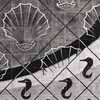 Mural of tiles of west façade of the Ministerio da
Educação
e Saúde Pública, Rio de Janeiro. Cândido
Portinari and Paulo Rossi. Black and white photograph. 1937.
Cândido Portinari (1903-1962), son of Italian parents, born
in the state of São Paulo, is often considered Brazil's
greatest modern painter. In 1937 he was commissioned to prepare
the murals for the Ministry of Education building designed by
Oscar Niemeyer. (Archive of Hispanic Culture, Prints and
Photographs Division)
Mural of tiles of west façade of the Ministerio da
Educação
e Saúde Pública, Rio de Janeiro. Cândido
Portinari and Paulo Rossi. Black and white photograph. 1937.
Cândido Portinari (1903-1962), son of Italian parents, born
in the state of São Paulo, is often considered Brazil's
greatest modern painter. In 1937 he was commissioned to prepare
the murals for the Ministry of Education building designed by
Oscar Niemeyer. (Archive of Hispanic Culture, Prints and
Photographs Division)
A collection of nineteenth- and early twentieth-century Mexican periodicals and newspapers, the HEMEROTECA HISTORICA MEXICANA COLLECTION from Mexico's Instituto Nacional de Antropología e Historia, is located in the Microform Reading Room. Such titles as El Ateneo, El Ferro-Carril, La Aguila Mexicana, Diario del Gobierno de la República Mexicana, Mefistofeles, La Democracia: Periódico del Gobierno de Oaxaca, Revista Telegráfica de México, La Aurora Literaria, Correo Semanario de México, La Escuela Nacional de Artes y Oficios, and El Telégrafo Americano are found there.
The legal materials of Latin American and Caribbean nations- -the laws of nations, legislation, and official gazettes--are the strongest collection of any institution in the world. As one follows the progression of legal histories of the Americas, the complete sets of the congressional debates of national congresses, in the general books collection and on microfilm in the Microform Reading Room, are primary sources for the study of government in creation. A nearly one thousand-microfiche record of the Historia de los debates legislativos en México, from 1821 to 1991, is found in the Microform Reading Room.
Also available on microform are the official publications of the Organization of American States, the United Nations, the League of Nations, and the Foreign Broadcast Information Service and an estimated 98 percent of all U.S. doctoral dissertations that appear in Dissertation Abstracts.
Contemporary political issues in Latin America have not escaped the Library of Congress's collecting interests. The Microform Reading Room has the Colección de documentos para la historia de la oposición política al estado autoritario en Chile 1973-l981 (in four microfiches) which contains documents produced by central committees, political commissions, congresses, and other organizations of political parties in opposition to Pinochet in Chile including those of the Socialists, Christian Democrats, Radicals, and the Communists; MAPU, Movimiento Acción Popular Unitaría, Chile which is a nineteen-microfiche collection by Información Documental de America Latina on that Chilean party's activities from 1969 to the early 1970s; and Partido Comunista de Chile, which is a ninety-four-microfiche collection on the activities of the Communist Party of Chile from 1950 through 1973 and includes the official papers and complete holdings of Principios (the official journal of the party's central committee).
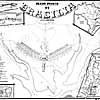 Plano piloto de Brasília. Lucio B. Costa. Abril
1958. The new
capital of Brazil, in the state of Goiás, was designed and
built under the direction of Lúcio Costa and Oscar
Niemeyer. It was inaugurated on April 21, 1960. Brazilians from
the eighteenth century had dreamed of relocating the national
capital from the coast to the interior and wrote that dream into
the 1891, 1934, and 1946 constitutions. President Juscelino
Kubitschek announced his intention to relocate the capital and
led the groundbreaking ceremonies on November 3, 1956. The city
is planned on two axes, in the shape of a cross or a bird in
flight, at right angles to one another. The east-west axis
contains the political, administrative, economic, cultural, and
recreational centers, and the north-south axis contains the
residential districts. This map is the preliminary plan for the
development of Brasília. (General Collections, Geography
and Map Division)
Plano piloto de Brasília. Lucio B. Costa. Abril
1958. The new
capital of Brazil, in the state of Goiás, was designed and
built under the direction of Lúcio Costa and Oscar
Niemeyer. It was inaugurated on April 21, 1960. Brazilians from
the eighteenth century had dreamed of relocating the national
capital from the coast to the interior and wrote that dream into
the 1891, 1934, and 1946 constitutions. President Juscelino
Kubitschek announced his intention to relocate the capital and
led the groundbreaking ceremonies on November 3, 1956. The city
is planned on two axes, in the shape of a cross or a bird in
flight, at right angles to one another. The east-west axis
contains the political, administrative, economic, cultural, and
recreational centers, and the north-south axis contains the
residential districts. This map is the preliminary plan for the
development of Brasília. (General Collections, Geography
and Map Division)
The Library's office in Rio de Janeiro acquired in 1987 Pesquisa nunca mais, one of a limited edition of twenty-five copies detailing human rights abuses in Brazil during the 1960s and the 1970s. The Hispanic Division's Reading Room maintains a large file of declassified documents on the conflict in El Salvador in the 1980s and early 1990s from various U.S. agencies.
A collection of over 11,000 items issued by sociopolitical, religious, labor, and minority grass roots organizations in Brazil between 1966 and 1992 was compiled by the Library of Congress's Overseas Operations Field Office in Rio de Janeiro. The series, Brazil's Popular Groups 1966-1992, on 141 reels of microfilm, is located in the Microform Reading Room. The microform collections Iglesia en América Latina and Puebla 79 (by Información Documental de America Latina) are comprehensive compilations of documents relating to the activities of the Catholic Church in Latin America from CELAM II (1968) to CELAM III (1979).
The Library of Congress's holdings on Hispanic and Portuguese America, in which are found many irreplaceable treasures, have been assembled and supplemented for the advancement of the understanding of the Americas.
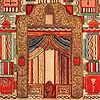 Retablo de Nuestro Señor de Esquipula, Chimayo,
New
Mexico [Altar Screen]. Watercolor. 1934. Little is known of the
history of the church of the Santuario. It was commissioned by
Bernardo Abeyta and was completed by 1816. Altar screens, like
the one depicted, are especially ornate in their design and
fabrication. This screen may have been painted by Molleno,
sometimes knows as the Chili Painter, whose career spanned the
period 1804 to 1845. The screen is conceived of as a stagelike
space that focuses on the tabernacle frame; its complexity is
best revealed in Spanish America where there was some fusion of
indigenous expression with European elements. Nuestro
Señor de Esquipula Church is associated with the cult of
the Señor of Esquipula that emphasized Christ's healing
and miraculous powers. The cult arose in Guatemala toward the
end of the sixteenth century after a period of strife and
turbulence between civil and ecclesiastical authorities. Although
the adobe church was built relatively recently, its construction
and decoration adhere to a pattern of missionary church building
found elsewhere in New Mexico, which has its roots in the early
church architecture of Mexico.(Historic American Buildings
Survey, Prints and Photographs Division)
Retablo de Nuestro Señor de Esquipula, Chimayo,
New
Mexico [Altar Screen]. Watercolor. 1934. Little is known of the
history of the church of the Santuario. It was commissioned by
Bernardo Abeyta and was completed by 1816. Altar screens, like
the one depicted, are especially ornate in their design and
fabrication. This screen may have been painted by Molleno,
sometimes knows as the Chili Painter, whose career spanned the
period 1804 to 1845. The screen is conceived of as a stagelike
space that focuses on the tabernacle frame; its complexity is
best revealed in Spanish America where there was some fusion of
indigenous expression with European elements. Nuestro
Señor de Esquipula Church is associated with the cult of
the Señor of Esquipula that emphasized Christ's healing
and miraculous powers. The cult arose in Guatemala toward the
end of the sixteenth century after a period of strife and
turbulence between civil and ecclesiastical authorities. Although
the adobe church was built relatively recently, its construction
and decoration adhere to a pattern of missionary church building
found elsewhere in New Mexico, which has its roots in the early
church architecture of Mexico.(Historic American Buildings
Survey, Prints and Photographs Division)
Ask a Librarian (08/19/2004)